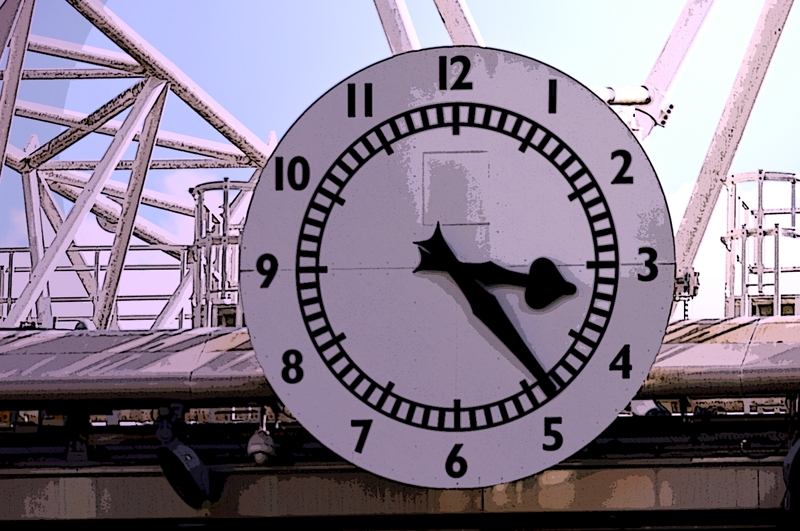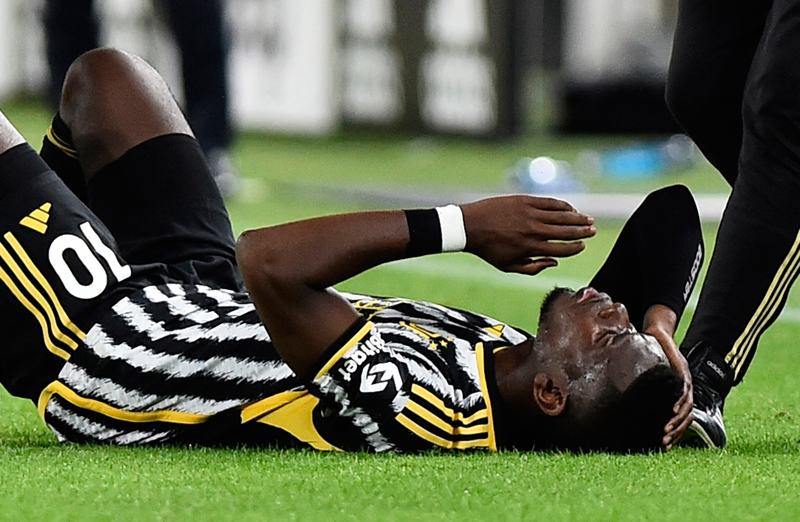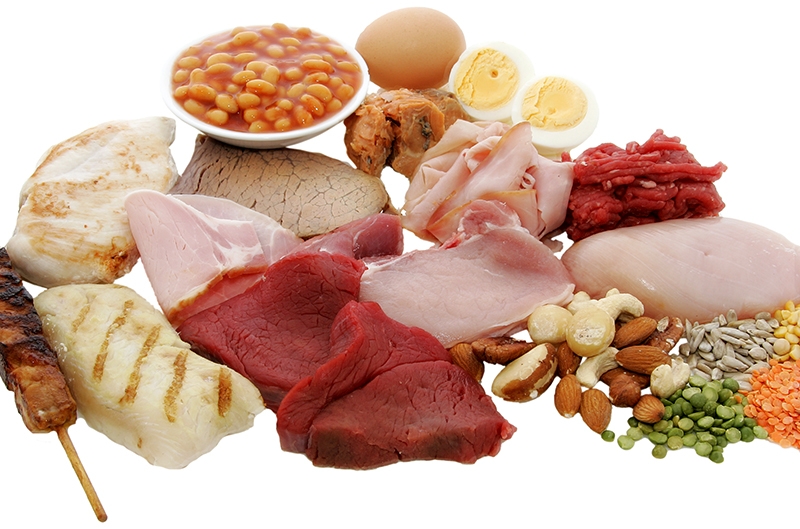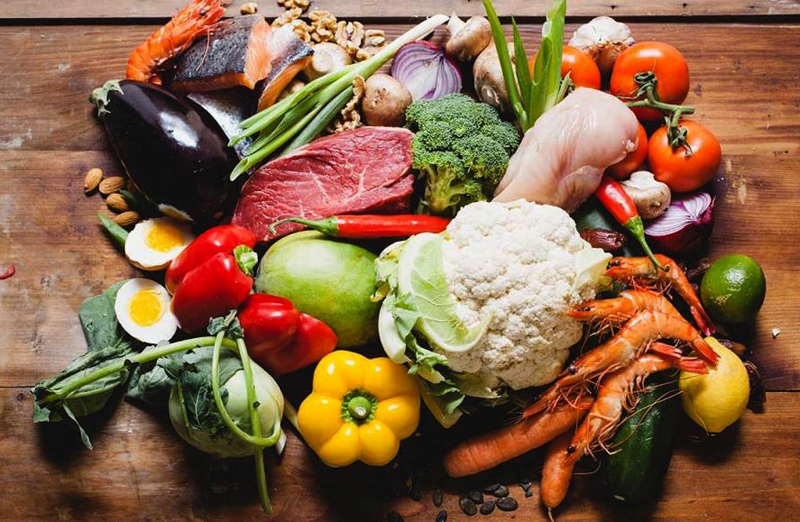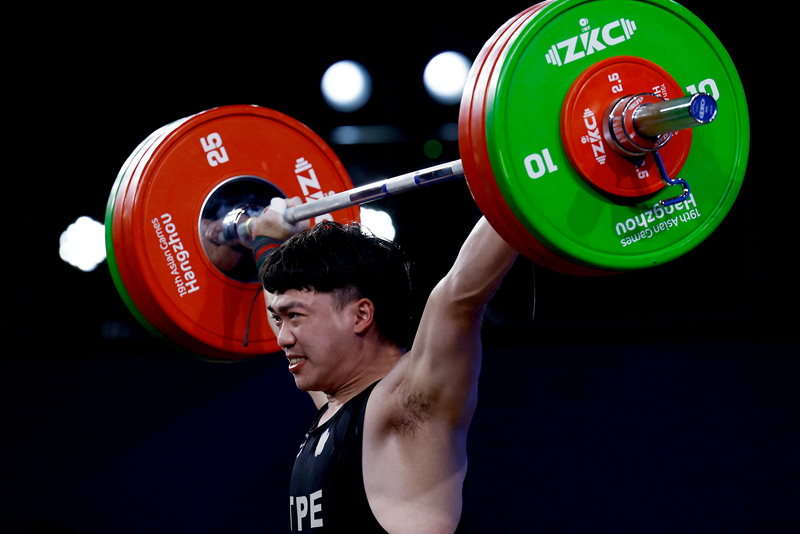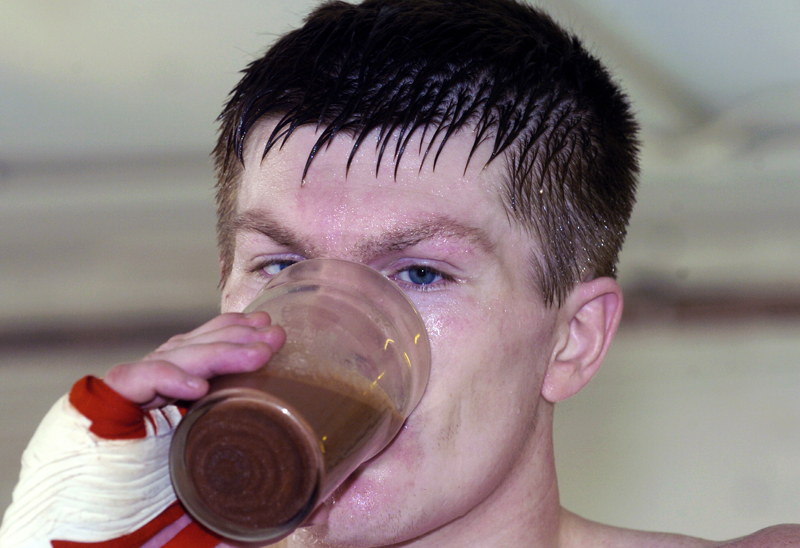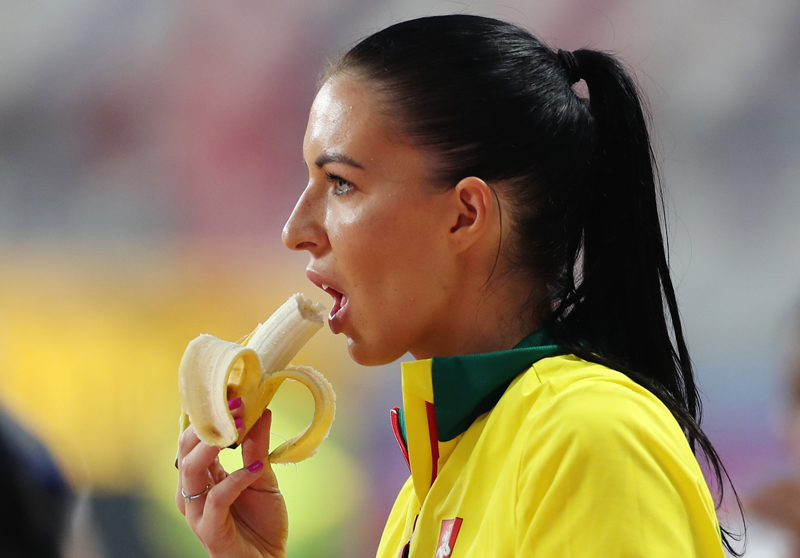You are viewing 1 of your 1 free articles. For unlimited access take a risk-free trial
Sports injury: can you eat your way to recovery?

Can post-injury nutrition affect your healing and recovery outcomes for the better? In this two-part article, Andrew Hamilton looks at what the research has to say, starting off with the macronutrients protein, fats and carbohydrate
When injury strikes, maximizing the speed of recovery is crucial for athletes seeking a speedy return to sport. Most athletes will already be familiar with methods such as rest, ice (to combat inflammation), stretching etc in an attempt to enhance recovery following an injury. But are there any other tools that can help you? In particular, is there a role for nutritional intervention? Although clinical studies are very thin on the ground, some recent research suggests that post-injury nutrition can and does play a role in healing and recovery, which is what we will explore here.Injury stages
Exercise-induced injuries generally have two main phases, both of which may be influenced by nutrition:- Inflammation/immobilization/atrophy stage (first stage) – In the initial stages, an inflammatory response is initiated, which is generally considered to be necessary for proper healing. This inflammatory stage may last for several hours up to several days depending on the injury. Depending on the type and severity of the injury, immobilization can last from a few days to several months. During this time, metabolic changes in the tissues resulting from inactivity lead to loss of strength and function (see figure 1).One of these changes involves loss of muscle mass - as most athletes who have been injured will testify! However functional problems can also result as a result of damage to other tissues, such as tendons and ligaments.
- Rehabilitation and increased activity of the injured limb (second stage) - This phase follows the return of mobility leading to muscle mass growth (hypertrophy) and the return of functionality to the injured area. Unfortunately, the complete recovery of strength and function following injury-induced immobilization takes much longer than the time it takes to lose them. In this phase, regenerating muscle tissue and consolidating the healing process (eg fracture healing, tendon repairs etc) are important.
Figure 1: Flow diagram of the metabolic and functional changes following injury-induced immobilization

Decreased synthesis of muscle and tendon proteins, as well as decreased muscle growth stimulation leads to a quick and dramatic decrease in muscle size and strength, tendon structure and function. NB: ‘Double down arrows’ in the boxes represent a large decrease, single down arrows represents a small decrease, single up arrows a small increase and double up arrows a large increase.
Phase-one nutrition
*Omega-3
As above, while inflammation is part of the healing process, it seems sensible that avoiding excessive inflammation is a worthwhile strategy at this stage. In recent years, evidence has accumulated that omega-3 polyunsaturated fats (PUFAs) such as EPA and DHA have potent anti-inflammatory actions(1). Synergistically, EPA and DHA play a role in controlling and limiting the inflammation process. This is achieved through biologically active compounds known as ‘inflammatory mediators’ such as prostaglandins, leukotrienes, lipoxins, resolvins and protectins. In addition, omega-3 PUFAs can also reduce activation of a key inflammatory pathway known as the ‘NF-κB pathway’, reducing the production of inflammatory cytokine (immune cell) production. This is in contrast to the omega-6 fatty acids (much more prevalent in Western diets), which is a known stimulator of NF-κB activity and thus pro-inflammatory(2).So far, so good. However, the problem however is that research on the necessary dose of omega-3 oils to elicit an anti-inflammatory effect in humans is still limited. One study found that the ability of EPA to reduce the pro-inflammatory hormone ‘prostaglandin E2’ occurred between an intake of 1.35 and 2.75 grams per day – much higher than that provided by most diets, even when dietary supplements are also used(3). Nevertheless, taking the evidence in the round, it seems reasonable to assume that in the acute phase following an injury, athletes should try to increase their omega-3 intake and omega-6 intake. As well as EPA/DHA supplements, this means eating more fatty fish (salmon, trout, sardines, herrings etc) flax seed oil, walnuts, pumpkin seeds etc, while reducing intakes of omega-6 fats - commonly found in vegetable oils, such as corn and sunflower, and processed foods containing them (check labels!).
*Protein (to prevent muscle loss)
During immobility following injury, the most obvious change is a loss of muscle mass leading to reduced muscle function. Inactivity results in rapid muscle loss, and the primary metabolic factor leading to muscle loss is decreased muscle protein synthesis. Increased protein intake is often the first nutritional countermeasure considered for muscle loss. However, research shows that while protein or essential amino acid intake increases muscle protein synthesis (both at rest and following exercise), this anabolic (muscle building) effect is blunted during prolonged periods of immobilization(4).One possible way round this effect is to consume protein such as whey, which is rich in the amino acid leucine. Studies in elderly humans indicate that immobilization-induced resistance to muscle growth may be overcome by increasing the leucine content in the diet of ingested amino acids(5). Furthermore, studies on rats in a catabolic state (ie with a tendency towards muscle tissue loss) have shown that leucine supplementation can reverse muscle protein losses, typically increasing muscle protein synthesis back to normal levels(6). In addition, numerous other studies have demonstrated unequivocally that leucine-rich protein is superior to other proteins for stimulating the synthesis of muscle tissue.
From the above, it seems logical that consuming leucine-rich protein such as whey during an initial period of immobilization following an injury could be beneficial for an athlete. The caveat however is that to date, no research has been carried out on the effects of leucine-rich protein supplementation on rates of muscle losses in injured and immobilized athletes. However, it’s certainly worth considering, particularly as there is nothing to lose by experimenting. To reiterate however, any protein supplementation should consist of leucine-rich protein such as whey because research shows that this protein type is significantly more effective at promoting muscle synthesis than supplementing pure leucine as an amino acid(7).
*Calories and energy
Another important consideration during injury-induced immobilization is the total energy intake (ie calories consumed). Depending on the extent of mobilization, a substantial decrease in total energy expenditure is likely because exercise is either more difficult or virtually impossible. This explains the necessity for an injured athlete to significantly reduce energy intake to avoid excessive weight gain – weight that has to be lost once training resumes!However, athletes should be cautious not to take this strategy too far. That’s because, during the injury healing process, energy expenditure is increased significantly, particularly early on and if the injury is severe(8). So, whereas the total energy intake may still need to be reduced, the reduction in calorie intake may not need to be too drastic. In injuries where crutches are required for walking, there’s also an additional energy requirement to be considered. For example, if crutches are needed to aid walking, the energy expenditure per unit of distance covered is typically two to three times over that of regular walking. A third caveat is that any insufficiency in energy intake will impair optimal muscle protein synthesis, in turn leading to greater muscle tissue loss. A balance therefore needs to be struck, and overall, a small amount of weight gain (which can be shed when you resume training) may actually be preferable to a lack of calorie intake, which is needed to support proper muscle healing and minimize inactivity-related muscle protein loss.
Phase-two nutrition
During the rehabilitation and increased activity phase, the goal is to restore muscle mass, strength and functionality. Other tissues affected such as tendons, ligaments and bone also need to regain maximum structural integrity, but we’ll discuss this aspect in greater detail in part two.*Protein/carbohydrate nutrition
The nutritional requirements for optimizing muscle hypertrophy during a rehab phase are similar to those above (for minimizing muscle loss). A protein intake of 2g/kg of bodyweight/day should be considered a minimum amount, while some quite recent research suggests that 2.5-3.0g per kilo might confer extra benefits (see this article for a more in-depth discussion). As mentioned above, leucine-rich protein consumed as whey has been shown to be a superior source of protein. However, with increasing activity, your total energy intake will need to rise accordingly. In particular, adequate carbohydrate intake should be ensured to help fuel your increasing activity level, particularly as muscle protein synthesis is an energetically expensive process, which will further increase energy requirements.Studies on muscle damage and recovery also suggest that immediate post-exercise feeding of protein combined with carbohydrate can further enhance muscle tissue synthesis(9,10) In terms of protein quantity, a number of studies suggest that approximately 0.25 grams of high-quality protein (such as whey) per kilo of bodyweight – eg 20 grams for an 80kg athlete – is an ample amount, and around the most that can be utilized by the body after one feeding(11-13).
As for timing and frequency of ingested protein, a landmark study compared three different frequencies of whey protein feeding on recovery and muscle repair over a 12-hour period following training and an initial recovery drink(14):
- 2 x doses of 40g every six hours
- 4 x doses of 20 grams every three hours
- 8 x doses of 10 grams every 1.5 hours
Finally, it’s worth adding that pre-sleep protein ingestion seems to significantly benefit muscle recovery and repair. One study suggests that 40 grams of casein protein before bed stimulates muscle protein synthesis overnight(15). And a recent study on subjects undergoing a 12-week training program showed that a low-fat pre-sleep drink containing 27.5 grams of protein and 15 grams of protein boosted muscle mass and strength gains compared to no pre-bedtime drink (16).
Summary of key recommendations for athletes
- #During immobilization, ample energy and protein should be consumed. Extra leucine intake (in the form of whey protein) should also be considered in an attempt to overcome the resistance to muscle tissue synthesis brought about by inactivity.
- #During the rehabilitation period extra protein (particularly in association with the exercise) may increase muscle hypertrophy and speed the return to full activity.
- #For optimal recovery, ample protein and energy - ie sufficient carbohydrate - is necessary. In particular, the timing of protein intake may help muscle protein synthesis.
- #While ample omega-3 intake is desirable for limiting excessive inflammation, athletes should resist the temptation to artificially to decrease inflammation by using anti-inflammatory medication (which could be counterproductive to the healing process) unless that inflammation has been clearly diagnosed as excessive or chronic.
In part two, we’ll explore the micronutrients. Can they help speed injury healing, and if so, which nutrients are most effective?
References- Nutrients 2010, 2, 355–374
- Biochem. Biophys. Res. Commun. 1996, 229, 643–647
- Am. J. Clin. Nutr. 2006, 83, 331–342
- J Physiol. 2008 Dec 15;586(24):6049-61
- Am J Physiol Endocrinol Metab 2006; 291:E381-E387
- Front Physiol. 2015 Mar 18;6:73
- Amino Acids. 2017 May;49(5):811-820
- Am J Clin Nutr. 1989 Mar;49(3):404-8
- Med Sci Sports Exerc 2012; 44(4): 682-691
- Med Sci Sports Exerc. 2015 Mar;47(3):547-55
- FASEBJ. 2005; 19, 422–424
- Am.J.Clin.Nutr. 2009; 89, 161–168
- Am.J.Clin.Nutr. 2014; 99, 86–95
- J.Physiol. 2013; 591,2319–2331
- Med.Sci.SportsExerc. 2012; 44,1560–1569
- J.Nutr. 2015; 145,1178–1784
Newsletter Sign Up
Testimonials
Dr. Alexandra Fandetti-Robin, Back & Body Chiropractic
Elspeth Cowell MSCh DpodM SRCh HCPC reg
William Hunter, Nuffield Health
Newsletter Sign Up
Coaches Testimonials
Dr. Alexandra Fandetti-Robin, Back & Body Chiropractic
Elspeth Cowell MSCh DpodM SRCh HCPC reg
William Hunter, Nuffield Health
Keep up with latest sports science research and apply it to maximize performance
Today you have the chance to join a group of athletes, and sports coaches/trainers who all have something special in common...
They use the latest research to improve performance for themselves and their clients - both athletes and sports teams - with help from global specialists in the fields of sports science, sports medicine and sports psychology.
They do this by reading Sports Performance Bulletin, an easy-to-digest but serious-minded journal dedicated to high performance sports. SPB offers a wealth of information and insight into the latest research, in an easily-accessible and understood format, along with a wealth of practical recommendations.
*includes 3 coaching manuals
Get Inspired
All the latest techniques and approaches
Sports Performance Bulletin helps dedicated endurance athletes improve their performance. Sense-checking the latest sports science research, and sourcing evidence and case studies to support findings, Sports Performance Bulletin turns proven insights into easily digestible practical advice. Supporting athletes, coaches and professionals who wish to ensure their guidance and programmes are kept right up to date and based on credible science.
